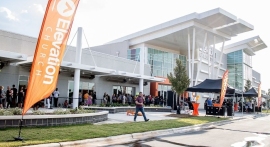Students initiated a protest in Hong Kong this past weekend that resurfaced a familiar image- Tiananmen Square. Thousands of protesters of all ages are now in the streets voicing their desire for democracy.
The students want full voting rights for Hong Kong as well as the freedom to choose candidates without the restriction of the Chinese government.
After a week of boycotting classes, around 200 university student protestors stormed the square in front of the government headquarters on Friday. In response, the police used pepper spray without discretion.
Older politicians, pro-democratic organizations, and citizens saw the passion in the students and have decided to join them. Many of the older citizens gave support through donations of food, water, and other supplies for the protesters.
Albert Ho, member of the Democratic Party in the Hong Kong legislature told the New York Times, "What happened yesterday was beyond our expectation."
"Now the younger people have taken control and used their advantage of surprise," he said. "This is something that will deeply concern the government."
One of the largest pro-democratic campaigns, called Occupy Central, decided to reschedule a protest in order to join the students' rally.
On Saturday, an estimated 60,000 protesters flooded the streets in a rally in front of the government headquarters. Many of them wore plastic goggles, plastic wraps, and ponchos as a defense against pepper spray.
Benny Tai, a co-founder of Occupy Central, encouraged the student protesters and pushed for change.
"Students have activated Hong Kong's largest-scale civil disobedience campaign ever," he said in a speech during the rally on Saturday.
Hong Kong, once British territory, has been experiencing degradation of democratic rights recently. Although Beijing decided to allow public elections in 2017 for a leader of Hong Kong, a separate government committee in Beijing must first approve the candidates.
The protests have lead to dozens of arrests police brutality. So far, there have been no talks between the protesters and government officials.



















